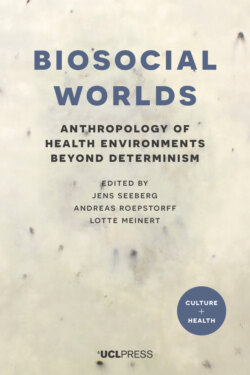Читать книгу Biosocial Worlds - Группа авторов - Страница 23
На сайте Литреса книга снята с продажи.
Epigenetics and miniaturised environments
ОглавлениеIt has been demonstrated repeatedly that prenatal exposure to ‘maternal stress, anxiety, and depression’ can have lasting effects on infant development associated with the appearance of psychopathology later in life. A review of 176 articles, based on findings from both animal and, to a lesser extent, human research, notes: ‘the in utero environment is regulated by placental function and there is emerging evidence that the placenta is highly susceptible to maternal distress and is a target of epigenetic dysregulation’ (Monk et al. 2012, 1361). In addition to which a large body of research suggests that postnatal maternal care can induce further disruptions. Such findings are based largely on correlations, but researchers are beginning to map segments of the pathways whereby environmentally induced epigenetic marks are apparently associated with behavioural outcomes pre- and postnatally (Monk et al. 2012). Antenatal depression and anxiety symptoms are picked out for particular attention as signs of an in utero environment that brings about dysregulation. In other words, the environment is effectively scaled down to molecular activity inside a single organ of the body – the uterus and its fetal contents.
In an article published in BioSocieties, Ilina Singh (2012) comments on a warning sent out to its members by the American Academy of Paediatrics in 2011 cautioning about the harm caused to children by ‘toxic stress’. Singh interprets this warning as a move towards increased monitoring of families, notably pregnant women and young mothers who, she suggests, are likely to be targeted for observation – their behaviour subjected to surveillance designed to avoid fetal and infant stress. Medical and social support for young childbearing women is to be lauded but, as Singh states, the possibility that home visits to pregnant women, such as those being carried out through a partnership of nurses and family practitioners in New York, might well become, in effect, ‘womb visits’ (as seems likely to be the case in the many other cities in North America where home visits during pregnancy are the practice). The poverty and often violent living conditions of many mothers-to-be may well be virtually ignored, and attention light almost exclusively on the pregnant belly and its contents (Singh 2012). Research findings from the Mapping of the Human Brain project are providing remarkable insights into the singularity and complexity of genes that appear to put a fetus at risk for autism following birth, and it appears that epigenetic changes in utero are implicated.
As this research unfolds, the womb and its environments will be monitored yet more closely (Semeniuk 2014). It is clear that if molecularised findings are not systematically embedded in broader socio/political contexts, there is a distinct danger that accounting for epigenetic changes will be reduced to the presumed habitual behaviours of named populations, social groups and parents – notably mothers – who disproportionally fall into disadvantaged, impoverished and stigmatised populations.
